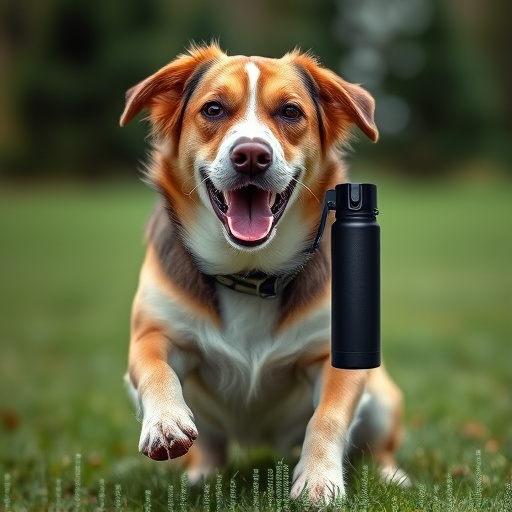Dog owners and handlers in many States can legally carry pepper spray as a self-defense measure against aggressive dogs, but regulations vary widely. Users must follow age restrictions, licensing guidelines, and employ it only as a last resort to protect both humans and animals. When choosing a dog deterrent spray, consider legality, potency, range, ease of use, and environmental impact to ensure responsible and effective usage.
“In many states, carrying pepper spray as a means of personal protection has been a legal and effective option. However, its use on dogs is a subject of growing interest and debate. This article explores dog deterrent spray, delving into its effectiveness, the legalities surrounding its use against canines across different states, and crucial factors to consider when choosing the right product for specific situations. Understanding these aspects ensures responsible and effective usage.”
- Understanding Dog Deterrent Spray: What It Is and Its Effectiveness
- Legalities of Pepper Spray for Dogs: A State-by-State Guide
- Choosing the Right Dog Deterrent Spray: Factors to Consider
Understanding Dog Deterrent Spray: What It Is and Its Effectiveness
Dog deterrent spray, also known as pepper spray for dogs, is a non-lethal self-defense tool designed to temporarily incapacitate or deter aggressive canine encounters. This type of spray contains capsaicin, the same ingredient that gives chili peppers their heat, which irritates a dog’s eyes and respiratory system when inhaled. The effectiveness of dog deterrent spray lies in its ability to disrupt an attack by causing discomfort and disorienting the dog momentarily, allowing for escape or assistance.
In many States, carrying pepper spray for self-defense against dogs is legal, provided that individuals follow specific regulations regarding age restrictions, quantity limits, and proper licensing. This legality underscores the growing recognition of dog deterrent spray as a valuable tool for pet owners, hikers, and anyone interacting with potentially aggressive dogs in remote areas. However, it’s crucial to understand that while effective, pepper spray should be used responsibly and only when necessary to ensure both safety and the well-being of animals involved.
Legalities of Pepper Spray for Dogs: A State-by-State Guide
In the United States, the legality of carrying pepper spray for dog deterrence varies from state to state. Before considering this method as a means to protect yourself or your property from aggressive dogs, it’s crucial to understand the specific regulations in your area. Some states allow residents to carry pepper spray without a permit, while others require a license or registration. For instance, California and New York have strict regulations regarding the possession of pepper spray, including restrictions on the amount and type allowed. In contrast, states like Texas and Florida have more lenient laws, permitting individuals to carry pepper spray for self-defense without a permit.
When navigating these legalities, it’s essential to remember that using pepper spray on dogs should be a last resort and only when other non-lethal methods have been exhausted. Additionally, the specific laws regarding pepper spray for dog deterrence may include restrictions on where and how it can be used, as well as age limitations. It’s vital to stay informed about these regulations, as they can change over time, ensuring you remain compliant with your state’s legal requirements when considering carrying pepper spray for dog deterrent purposes.
Choosing the Right Dog Deterrent Spray: Factors to Consider
When selecting a dog deterrent spray, several key factors come into play, especially considering the legalities around pepper spray for dog control vary across different States. Firstly, ensure the product is legally allowed in your area—not all states permit the carrying of pepper spray, and restrictions are often place on its use. Product potency and range are also critical; you’ll want a spray with enough kick to deter aggressive dogs but not so strong that it causes undue harm or panic. The spray’s application method and ease of use should be considered too—some require shaking before use, while others have trigger mechanisms designed for quick deployment in high-stress situations. Additionally, eco-friendly options are becoming more available, catering to those concerned about the environmental impact of traditional sprays.
In light of the above discussions, it’s clear that understanding and adhering to state laws regarding the legal carry of pepper spray for dogs is paramount. Each state has its own regulations, so thoroughly researching and choosing the right dog deterrent spray based on effectiveness and safety is crucial. By considering factors like can size, spray range, and ingredients, you can make an informed decision to protect your property and loved ones from unwanted canine interactions. Remember, knowing the legalities and using deterrents responsibly are key to ensuring a harmonious coexistence with our furry neighbors.
